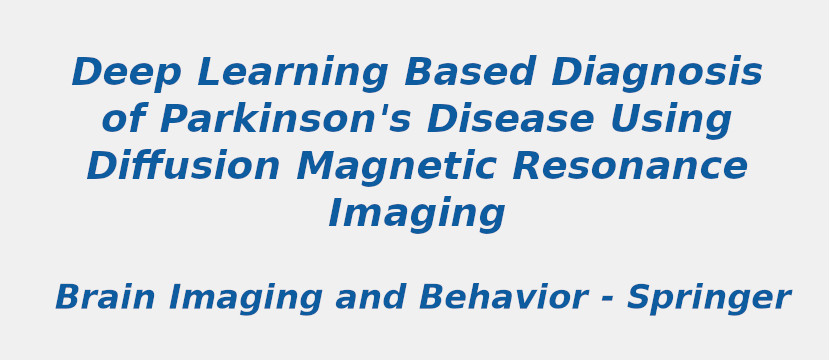Research Area: Machine Learning
The diagnostic performance of a combined architecture on Parkinson disease using diffusion tensor imaging was evaluated. A convolutional neural network was trained from multiple parcellated brain regions. A greedy algorithm was proposed to combine the models from individual regions into a complex one. Total 305 Parkinson disease patients (aged 59.9±9.7 years old) and 227 healthy control subjects (aged 61.0±7.4 years old) were enrolled from 3 retrospective studies. The participants were divided into training with ten-fold cross-validation (N = 432) and an independent blind dataset (N = 100). Diffusion-weighted images were acquired from a 3T scanner. Fractional anisotropy and mean diffusivity were calculated and was subsequently parcellated into 90 cerebral regions of interest based on the Automatic Anatomic Labeling template. A convolutional neural network was implemented which contained three convolutional blocks and a fully connected layer. Each convolutional block consisted of a convolutional layer, activation layer, and pooling layer. This model was trained for each individual region. A greedy algorithm was implemented to combine multiple regions as the final prediction. The greedy algorithm predicted the area under curve of 94.1±3.2% from the combination of fractional anisotropy from 22 regions. The model performance analysis showed that the combination of 9 regions is equivalent. The best area under curve was 74.7±5.4% from the right postcentral gyrus. The current study proposed an architecture of convolutional neural network and a greedy algorithm to combine from multiple regions. With diffusion tensor imaging, the algorithm showed the potential to distinguish patients with Parkinson disease from normal control with satisfactory performance.
Keywords:
Deep Learning
Convolution neural network
Diffusion tensor imaging
Differential diagnosis
Idiopathic Parkinson disease
Author(s) Name: Hengling Zhao, Chih-Chien Tsai, Mingyi Zhou, Yipeng Liu
Journal name: Brain Imaging and Behavior
Conferrence name:
Publisher name: Springer
DOI: 10.1007/s11682-022-00631-y
Volume Information: 16, pages 1749–1760 (2022
